Web presence website Debut November, 2002 Retired March, 2014 Role Sumo wrestler Height 2.02 m Movies Thermae Romae II | Record 537-337-63 Highest rank Ozeki (January, 2006) Name Kotooshu Katsunori Makuuchi rank Ozeki (since 2006) Spouse Asako Ando (m. 2010) | |
Weight 153 kg (337 lb; 24.1 st) Similar People Baruto Kaito, Hakuho Sho, Kisenosato Yutaka, Kotoshogiku Kazuhiro, Harumafuji Kohei | ||
Cnn s talk asia program bulgarian sumo wrestler koto sh katsunori 1 3
Kotoōshū Katsunori (琴欧洲 勝紀) (legal name: Karoyan Andō, born February 19, 1983 as Kaloyan Stefanov Mahlyanov, Bulgarian: Калоян Стефанов Махлянов, in Dzhulyunitsa, Veliko Tarnovo Province, Bulgaria) is a former professional sumo wrestler or rikishi. He made his debut in 2002, reaching the top division just two years later. In 2005 he reached the rank of ōzeki or 'champion', the second-highest level in the sumo ranking system behind only yokozuna. On May 24, 2008, Kotoōshū made history by becoming the first European sumo wrestler to win an Emperor's Cup. He was one of the longest serving ōzeki in sumo history, holding the rank for 47 consecutive tournaments until November 2013. In January 2014 Kotoōshū obtained Japanese citizenship, a requirement of becoming an elder in the Japan Sumo Association, and he announced his retirement during the following tournament in March.
Contents
- Cnn s talk asia program bulgarian sumo wrestler koto sh katsunori 1 3
- Cnn s asia now program bulgarian sumo wrestler koto sh katsunori 2 3
- Early life and sumo background
- Promotion to zeki
- zeki career
- Demotion and retirement
- Fighting style
- In popular culture
- Family
- References
Cnn s asia now program bulgarian sumo wrestler koto sh katsunori 2 3
Early life and sumo background
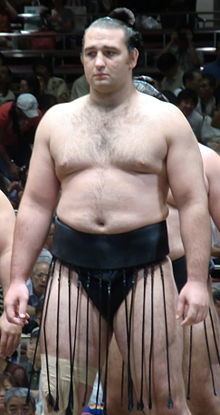
He was originally a Greco-Roman wrestler, coached by his father, and by the age of 14 he had already won a European championship. He was accepted by the Bulgarian National Sports Academy where he majored in wrestling. He hoped to compete for Bulgaria in the 2000 Olympic Games, but as his weight increased beyond the 120 kg upper limit, he switched instead to sumo. He was recruited by Sadogatake stable, whose stablemaster was impressed by his filial duty of sending money home to his parents.
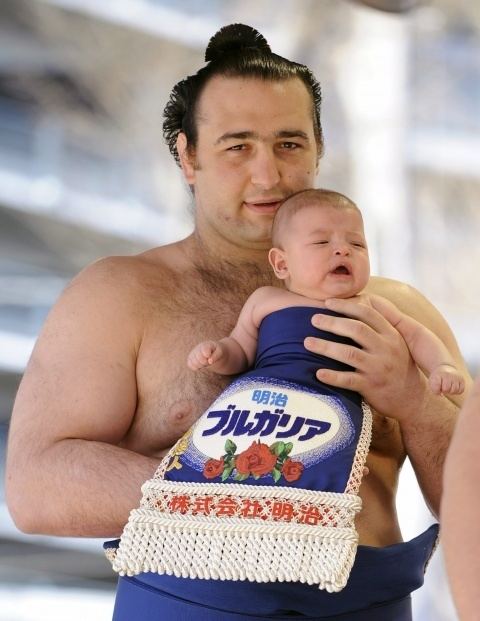
Mahlyanov's professional sumo debut was in November 2002, starting in the lowest-ranked jonokuchi division. He was given the shikona of Kotoōshū, derived from his place of origin — koto, shared by all wrestlers at his stable, and ōshū, meaning Europe. (Following the September 2006 tournament, he changed one of the characters in his ring name, 州 becoming 洲, although the pronunciation, shū, is the same for both.) He posted kachikoshi (winning records in tournaments) throughout his early career, going 71-15 in the five divisions below the makuuchi top division. He reached makuuchi in September 2004, only 11 tournaments after his professional debut, the fastest rise since the introduction of the six tournaments per year system in 1958.
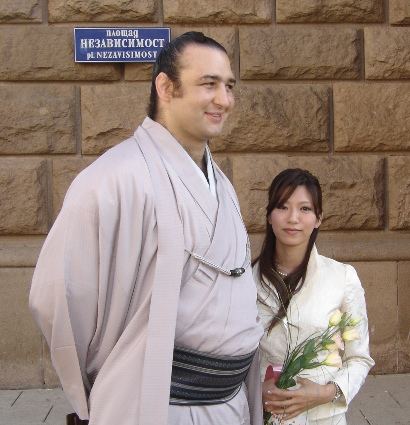
Upon reaching the top division he had kachikoshi winning records for four consecutive tournaments, being promoted to san'yaku at the rank of komusubi before the March 2005 basho (sumo tournament). At the rank of komusubi, he made his first makekoshi (losing tournament) record, and was demoted to maegashira again before returning to the higher rank of komusubi after a strong 10-5 record in May.
Promotion to ōzeki
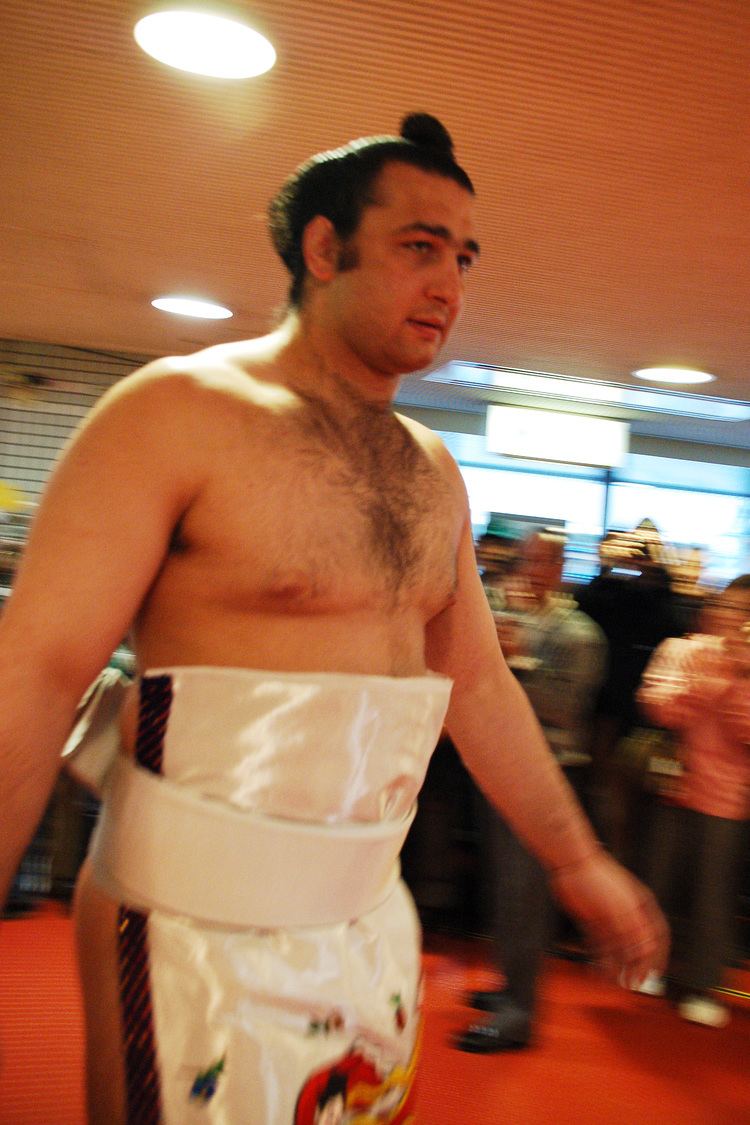
In the July 2005 tournament Kotoōshū defeated Asashōryū for the first time with an overarm (uwatenage) throw, bringing to an end a run of 24 consecutive bout victories for the yokozuna. He also was the runner up in the tournament, winning an "outstanding performance" sanshō prize.
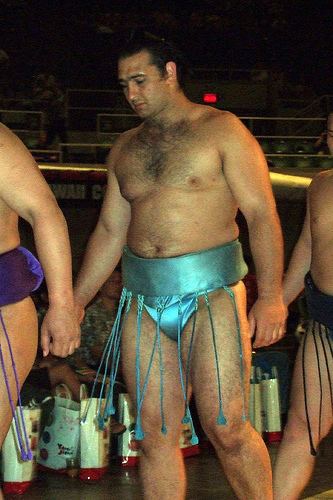
Kotoōshū was promoted to sekiwake for the following September tournament and won his first twelve bouts, finishing with an exceptional 13-2 runner up record and only losing the tournament victory after a play-off bout with Asashōryū. An 11-4 record in the final (November) tournament of 2005 was his third runner-up performance in a row and included another victory over the otherwise dominant Asashōryū. This led to his promotion to the rank of ōzeki on November 30, 2005. His three-tournament record (on which ōzeki promotions are based) was 36-9. His promotion coincided with the retirement of his stablemaster, former yokozuna Kotozakura.
His promotion to ōzeki took only 19 tournaments from his professional sumo debut. Although he was not the youngest ōzeki ever, this represents the most rapid rise for a wrestler entering sumo from the bottom jonokuchi division. (Certain experienced amateur wrestlers can be given dispensation to start in the third-highest makushita division.) He is also the first wrestler of European birth to hold the ōzeki rank, and the fifth non-Japanese to have achieved it (following Konishiki, Akebono, and Musashimaru from Hawaii and Asashōryū from Mongolia).
Ōzeki career
After his promotion, Kotoōshū was somewhat restricted by a knee injury. He was also criticised for relying too much on the henka technique– jumping to the side at the initial charge. It is not considered to be a move worthy of someone at his high rank.
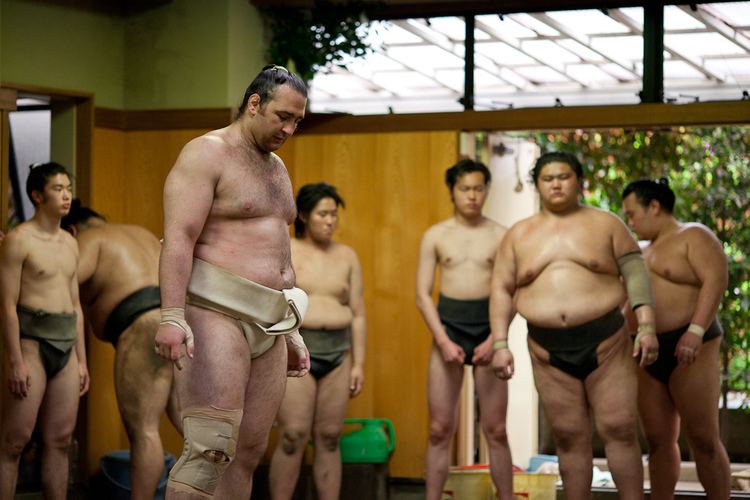
Kotoōshū managed only three double-figure scores in 2006, and none at all in 2007, only doing enough to maintain his rank. Shortly before the November 2007 tournament he dislocated his right knee in training. Clearly troubled by the injury he pulled out on the 7th day, the first time in his career that he has had to withdraw from a tournament. He preserved his ōzeki rank with a 9-6 score in January 2008. In the Osaka tournament of March 2008 he injured his left arm in a match with Kakuryū on the 4th day and withdrew on Day 9 with only two wins. There was speculation that he would be demoted to sekiwake in the following tournament in May.
Needing eight wins to hold his rank in the May 2008 tournament, he won 12 consecutive bouts including dominating victories against yokozuna Asashōryū on the 11th day and yokozuna Hakuhō on the 12th day. He was easily defeated by Aminishiki on the 13th day, but came back strong to defeat Ama on the 14th day, becoming the first European to win a top division championship. His father was in the crowd to witness his victory. He was also congratulated by the Bulgarian President Georgi Parvanov.
Kotoōshū was unable to follow up his victory with a push for yokozuna promotion, producing scores of only 9-6 and 8-7 in the next two tournaments. In October 2008 he denied allegations by disgraced former wrestler Wakanohō that he had thrown matches against Kotoōshū in return for money, saying "I am saddened by this. It is all lies." Wakanohō subsequently retracted his comments. He produced scores of 10-5 in the first two tournaments of 2009, the best record amongst his fellow ōzeki. In the May 2009 tournament, he finished the tournament with a 9-6 score. However, he ended yokozuna Hakuhō's 33-bout winning streak on the 14th day. In July 2009 he was in contention for the yūshō until the final day and finished runner-up with an impressive 13-2 score. He never won more than ten bouts in a tournament after that. He pulled out of the May 2011 tournament on Day 11, citing a knee injury. He returned in July and preserved his rank by securing his eighth win on Day 10 (the last bout of fellow ōzeki Kaiō's career), finishing on 9-6. However he withdrew once again in September after suffering five defeats in the first six days. In the May 2012 tournament Kotoōshū withdrew with an ankle ligament injury on the last day, handing opponent Tochiōzan his twelfth victory by default and eliminating Hakuhō and two maegashira from the yūshō race. The crowd showed their displeasure by booing as his withdrawal was announced. He continued to suffer from injury problems, also withdrawing from the September 2012 as well as the March, September and November 2013 tournaments.
Demotion and retirement
Having failed to record winning records in two consecutive tournaments, he was relegated back to sekiwake at the January 2014 tournament. He had been an ōzeki for 47 tournaments, which is the fourth highest in sumo history. A record of at least 10-5 at sekiwake in January would have allowed him to immediately regain his ōzeki rank. However, he suffered his 6th loss on the 13th day against Endō. He retired during the following tournament in March after 9 losses in a row, saying "I’ve had so many injuries recently, but I have no regrets because I gave it my utmost over 12 years." Having obtained Japanese citizenship and legally changed his name to Karoyan Andō (安藤 カロヤン, Andō Karoyan), he is staying in sumo as an elder of the Sumo Association. He acquired the Naruto toshiyori kabu or elder license in 2015. He is a coach at Sadogatake stable and is planning to open his own stable of wrestlers in April 2017.
Fighting style
Kotoōshū was a tall and rather light rikishi at 203 cm (6 feet, 8 inches) and 152 kg (334 pounds). In comparison, former yokozuna (grand champion) Akebono, at the same height, weighed 235 kg (517 pounds) at his peak. Yokozuna Asashōryū had about the same weight, but is only 184 cm in height. Kotoōshū primarily relied on so-called 'belt-throws' to win his sumo bouts. He typically preferred to take a hidari-yotsu (left-hand inside grip) on his opponent's mawashi (the belt that is fixed around the wrestler's waist), although he was right-handed and his overall profile showed him preferring migi-yotsu (right-hand inside grip). He used his long arms and quick footwork to counteract his high center of gravity and relatively light weight. His most common winning kimarite was yorikiri, the force out, followed by uwatenage, the outer arm throw.
Kotoōshū has remarked that his tournament victory was partially due to a weight gain of five kilos which enabled him to be sturdier against his opponents.
In popular culture
Kotoōshū and a football player, Hristo Stoichkov, are said to be the two most famous Bulgarian people in Japan.
Family
In May 2009 Kotoōshū announced his engagement to 29-year-old Asako Andō from Ichinomiya, Aichi, whom he had dated for the previous five years. They were married in February 2010, on St. Valentine's Day, at the New Otani Hotel in Tokyo, with around 600 guests including yokozuna Hakuhō attending. They welcomed their first son, Kiril Andō, in November 2011.
He injured his right knee towards the end of the May 2010 tournament which required surgery and forced him to cancel plans to have a second wedding ceremony in Bulgaria, at the Evksinograd resort in Varna, during the European Sumo Championships.
